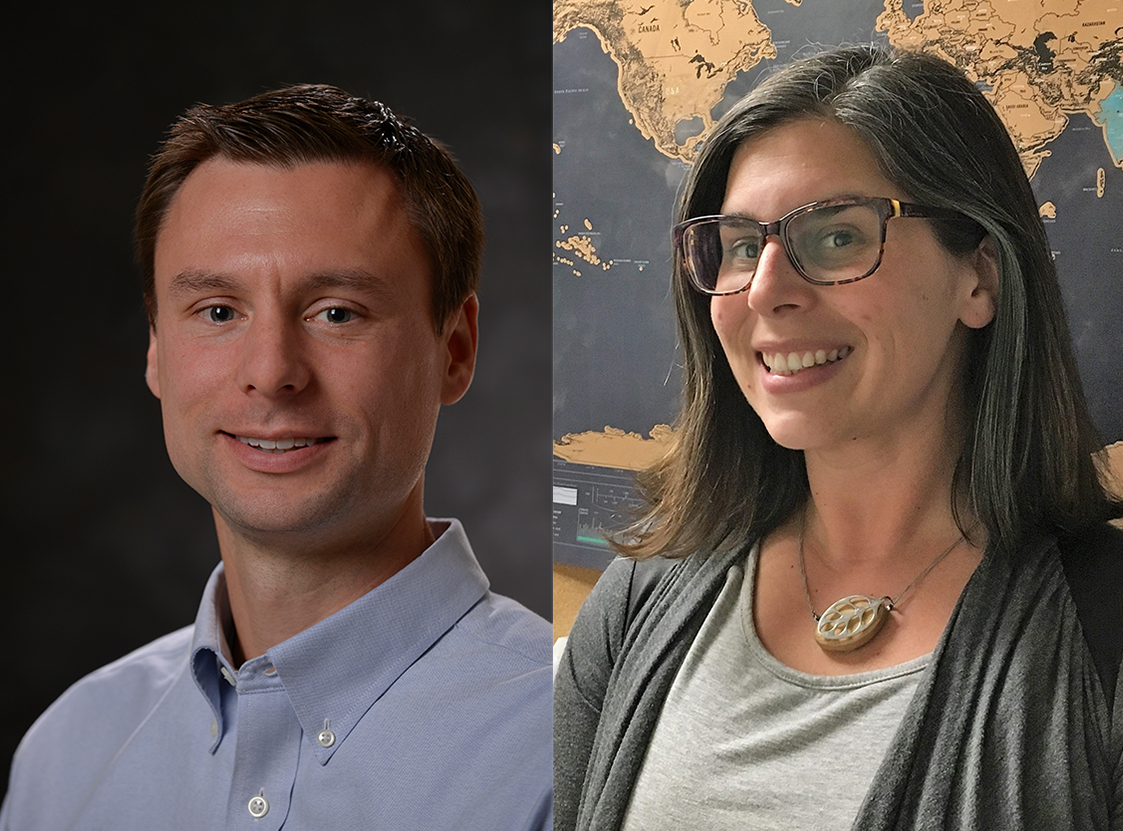Interdisciplinary Project Experience Bolster Alumni in Fight Against COVID-19
Department(s):
AlumniWhen U.S. Centers for Disease Control and Prevention’s (CDC) informatics health scientist Erin (Bliven) Sizemore ’04 found herself suddenly partnering with an MIT Lincoln Lab team through CDC’s emergency response to COVID-19, she was reassured to find a fellow WPI graduate on the partnering team. Adam Norige ’03, ’04 MS, an associate group leader at MIT Lincoln Laboratory, was also thankful to know one of his new CDC teammates earned the same interdisciplinary project-based education he did during his time at WPI.
“At the CDC, the pandemic became (and still is) an all-hands-on-deck situation.” Erin Sizemore

Leading into 2020, Sizemore was conducting tuberculosis research with CDC’s Division of Tuberculosis Elimination, where she held a variety of roles culminating in lead epidemiologist and data manager for the Tuberculosis Trials Consortium (TBTC). However, as it became clear the world was facing a global pandemic, she volunteered to support the COVID-19 emergency response. Sizemore recently shares, “During public health emergencies, CDC provides emergency response efforts largely through volunteer deployments of CDC employees and U.S. Public Health Service Commissioned Corps. In a crisis, CDC staff travel the globe in support of emergency health situations. Since 2015, I have had multiple deployments including to Sierra Leone and Rwanda. Most recently however, I have deployed twice to the CDC’s Emergency Operations Center for COVID-19, and it was under my Contact Tracing & Innovation, Innovative Technologies Team (ITT) role that I began my work with Adam.”
At MIT Lincoln Laboratory, Norige was initially involved in efforts to build sensors and analytics to help strengthen the country’s capabilities against biological threats. Over time, that body of work revealed that broader disaster relief technologies were needed. This led Norige to cofound a group focused on developing novel technologies to assist with some of the nation’s most complex disaster relief and humanitarian assistance challenges.
“When it became clear that COVID-19 was going to become a pandemic, we brought these two research fields together and focused much of our research activities on identifying and creating near-term technologies that could assist with the response.” says Norige.
Currently, Sizemore, Norige, and their respective teams are collaborating to understand how COVID-19 exposure notification technologies can help limit viral transmission. Their shared goal is to rapidly develop and evaluate a range of new technologies that will help control the spread of pandemics, including COVID-19. Norige explains, “The capabilities that we build now will help strengthen our ability to respond to future epidemics and similar events with less disruption to our daily lives.”
The two teams worked to evaluate Apple|Google’s Exposure Notification (EN) solution—a proximity tracing tool to support COVID-19 contact tracing. Sizemore was engaged through a CDC COVID-19 response task force focused on State, Tribal, Local & Territorial Support where she led the ITT team. Norige and his MIT colleagues provided the CDC team with valuable results and findings about the EN technology, so the CDC team could accurately advise state and local partners.
“My WPI education has become the foundation for my career. Majoring in biomedical engineering at WPI enabled me to gain deep exposure to many subjects, ranging from computer processor architectures to virology. Plus, those long nights in Salisbury Labs taught me a lot about the value of persistence.” Adam Norige
The pair, working collaboratively in unique yet complimentary roles on the interdisciplinary project, epitomize all that is extraordinary about a WPI education. In using the theory and practice they gained at WPI, Sizemore and Norige are working to make a positive impact in the world—when the world needs it most. Norige acknowledges his WPI education stating, “My experiences at WPI were especially helpful during the pandemic, because novel solutions were urgently needed and so little was known about the virus at the beginning. If we were going to make a difference, we had to innovate quickly and adapt as we continued to learn. And as in most cases, the best ideas were multidisciplinary in nature.”
Sizemore adds, “The pandemic has provided an opportunity and environment for innovation unlike any I had experienced in my previous years at CDC. It was abundantly clear that the normal way of doing business wasn’t going to be sufficient to tackle this pandemic. My time at WPI, surrounded by brilliant classmates, taught me to respect everyone’s skills and experiences and that through pulling together people of different perspectives and skill sets, a greater product would result. WPI laid the foundation of that philosophy for me, and that’s a lesson I keep with me every day at CDC.”